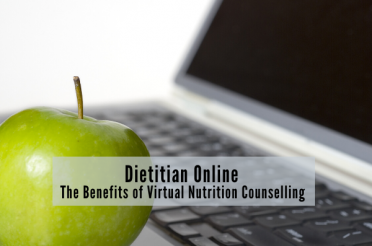[ad_1]
Getting a variety of fruits and vegetables in your diet

Have you ever been told to eat the rainbow? No, I am not referring to the Skittles ‘taste the rainbow’ ads. I am talking about adding colour to your plate in the form of a variety of fruits and vegetables.
Why Eat a variety of Fruits and Vegetables?
Fruits and vegetables provide us with vitamins, minerals, fiber and phytochemicals. Vitamins and minerals are essential nutrients that have specific roles in the body. They help with cell maintenance, immunity, chemical reactions, help convert the food we eat into usable energy, and so much more! Fiber from colorful fruits and vegetables plays an important role in the management of cholesterol, diabetes and the overall feeling of being full. Phytochemicals function as antioxidants, phytoestrogens and anti-inflammatory agents. Each playing an important role in disease management.
Why are different colors important?
Often when we advise clients to aim for 50% of their plate to be fruits and vegetables, we don’t always emphasize the fact that we want them to be from different kinds of fruits and vegetables as well as different colors.
This is important because each color of fruit and vegetable provides us with different nutrients. Did you know that? Not to mention it makes our plate look prettier – we want to eat those colorful, inviting foods!
The color compounds in fruits and vegetables are the phytochemicals or phytonutrients. These nutrients in a plant are a part of their protective system, like their immune system, so, when we eat plant foods, we also see protection in our systems. Research has shown us that eating a wide variety of fruit and vegetables and eating adequate amounts of each can reduce our risk for chronic diseases.
Ensuring that you eat a wide variety of colorful fruits and vegetables will aid in all the benefits they have to offer.
- Orange colored fruits and vegetables for are high in carotenoids which have been linked to a decrease risk of certain cancers and eye disease.
- Blue colored fruit and vegetables are high in anthocyanin that helps preserve brain function as we age.
- Green leafy vegetables are high in antioxidants that are related to a reduction of for cancer prevention.
Most fruits and vegetables provide several of the same vitamins, minerals and phytochemicals however each is known for specific role in the body.

What Eating the Rainbow Provides
- Red: red apples, red grapes, red bell peppers, strawberries and raspberries, beets, watermelon, red onions, tomatoes.
- Orange and yellow: carrots, sweet potatoes, yellow bell peppers, oranges, bananas, pineapple, mango, squash and pumpkin, peaches, corn, cantaloupe, apricots.
- Green: lettuce varieties including spinach, cabbage and kale, broccoli, avocados, green leafy herbs, Brussel sprouts, kiwi, asparagus, green beans.
- Blue and purple: blueberries and blackberries, concord grapes, raisins, eggplant, prunes, purple cabbage, plums, figs.
- White and brown: onions, cauliflower, garlic, leeks, parsnips, mushrooms.
How many servings of fruits and vegetables do I need each day?
The Canadian guidelines and recommendations for fruit and vegetable consumption:
Children aged 2-3: 4 serves per day
Children aged 4-8: 5 serves per day
Children aged 9-13: 6 serves per day
Teens aged 14-18: males 8 serves per day, females 7 serves per day
Adults aged 19-50: males 8-10 serves per day, females 7-8 serves per day
Adults aged 51 and older: 7 serves per day
What is a serving?
½ a cup of vegetables or 1 cup leafy greens, 1 medium piece of fruit or 2 small pieces of fruit or 1 cup mixed fruit.
½ a cup of juice is also considered a serve but when we drink the juice, we lose the fiber content so drinking juice is recommended in moderation and to choose eating the whole fruit more often.
5 Ways to increase your vegetable and fruit intake:
1) Serving sizes are small then most people realize, ensure you have fruit and vegetables at all meals
2) When aiming for 50% of your plate to be fruit and vegetables, choose 2 different kinds or have one cold (salad or raw) and one cooked. When choosing the 2 different kinds consider their colours to keep your plate colourful and increase the nutrient content.
3) Don’t forget snacks count too, aim to include fruits and vegetables in your snacks 
4) Add more vegetables to meals than recipes call for. Ex if a recipe calls for onion, carrot and celery in a soup, consider adding bell pepper, zucchini, mushrooms, peas or greens like spinach or kale.
5) Don’t forget about frozen fruits and vegetables, these food items are great to be added to smoothies, soups, stews, fried rice and casseroles.
Looking for some tasty, colorful recipes to try? Here are a few we’ve shared on the blog:
Looking for more simple meal planning tips and healthy recipes for a healthier lifestyle? Sign up for our weekly newsletter for a healthy recipe of the week (and nutrition articles and videos with a balanced living philosophy to help encourage healthy habits but still save room for your favorites). Our nutrition newsletter is written by the Online / Calgary Nutritionists on our team who each hold a professional Registered Dietitian license to ensure you are getting credible advice.
[ad_2]
Source link







